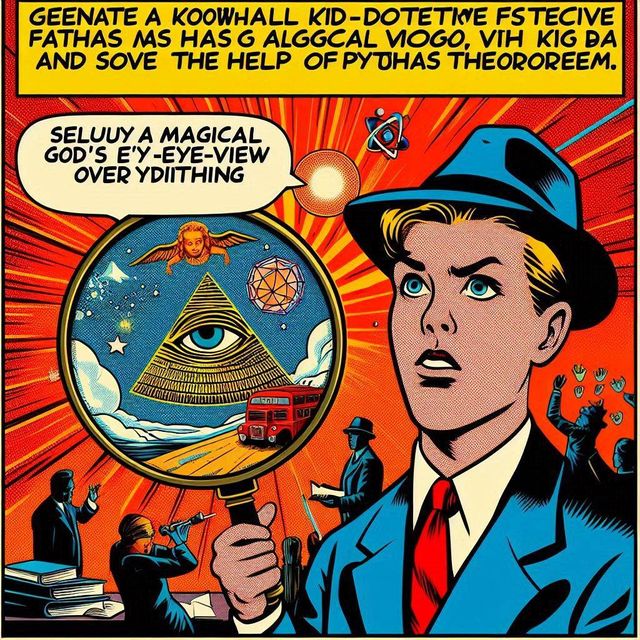-
Vijay Fafat
- Published on
A locked-room mystery which I found disorienting, needlessly complex and a bit incomprehensible, with very stilted writing, a know-it-all kid detective who has a magical god’s eye-view of everything, and a murder mystery which made little sense.
A couple is murdered in a two-storey house with square rooms built around a right-angled triangle. One of the deceased was a renowned painter, Tomitaro Tsuchida, and the other his mistress. The painter was judging some local art submissions for the mayor’s prize, and the number of submissions fit exactly the floor space of the Pythagorean rooms (roll eyes) . The story shows a diagram of the rooms to illustrate. As the annoying kid detective tells the senior detectives during one of the points of explanation:
“No, that wouldn’t have happened. That’s where the Pythagorean Theorem comes in.”
“What’s that?”
“You should have learned this in middle school. With any right-angled triangle, the area of the square whose side is the hypotenuse is equal to the sum of the areas of the squares of the other two sides.”
“Huh?” Muraki said, so Hashimoto took out his notebook and drew a picture. He drew a right triangle, and three squares that bordered the edges of the triangle.
“Like this?”
“Yes,” Kiyoshi said.
“The sum of the squares of the two smaller sides is equal to the square of the large one.”
“Is that possible with a triangle of any size?”
“If it’s a right triangle, definitely.”
“This is very interesting,” said Hashimoto.
“It’s a very old theorem developed by the ancient Greeks. A mathematician named Pythagoras discovered this,” Kiyoshi said.
“Amazing.”
“This house is built using the Pythagorean concept. The sum of the areas of the two studios upstairs is equal to the area of the guest room downstairs.”
Seems like the author wanted to somehow shoe-horn a mathematical theorem into a plot. Anyway, all points of problem are quickly explained, the murderer identified and everyone goes home admiring the brilliance of the annoying kid. QED.
